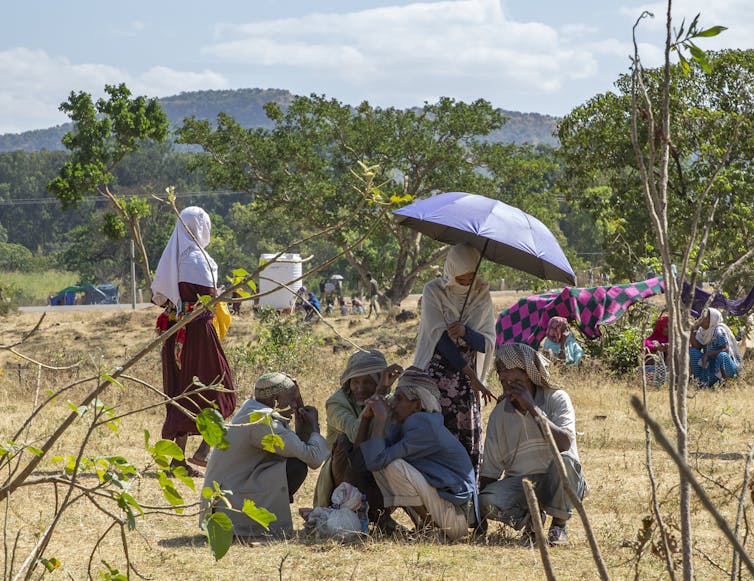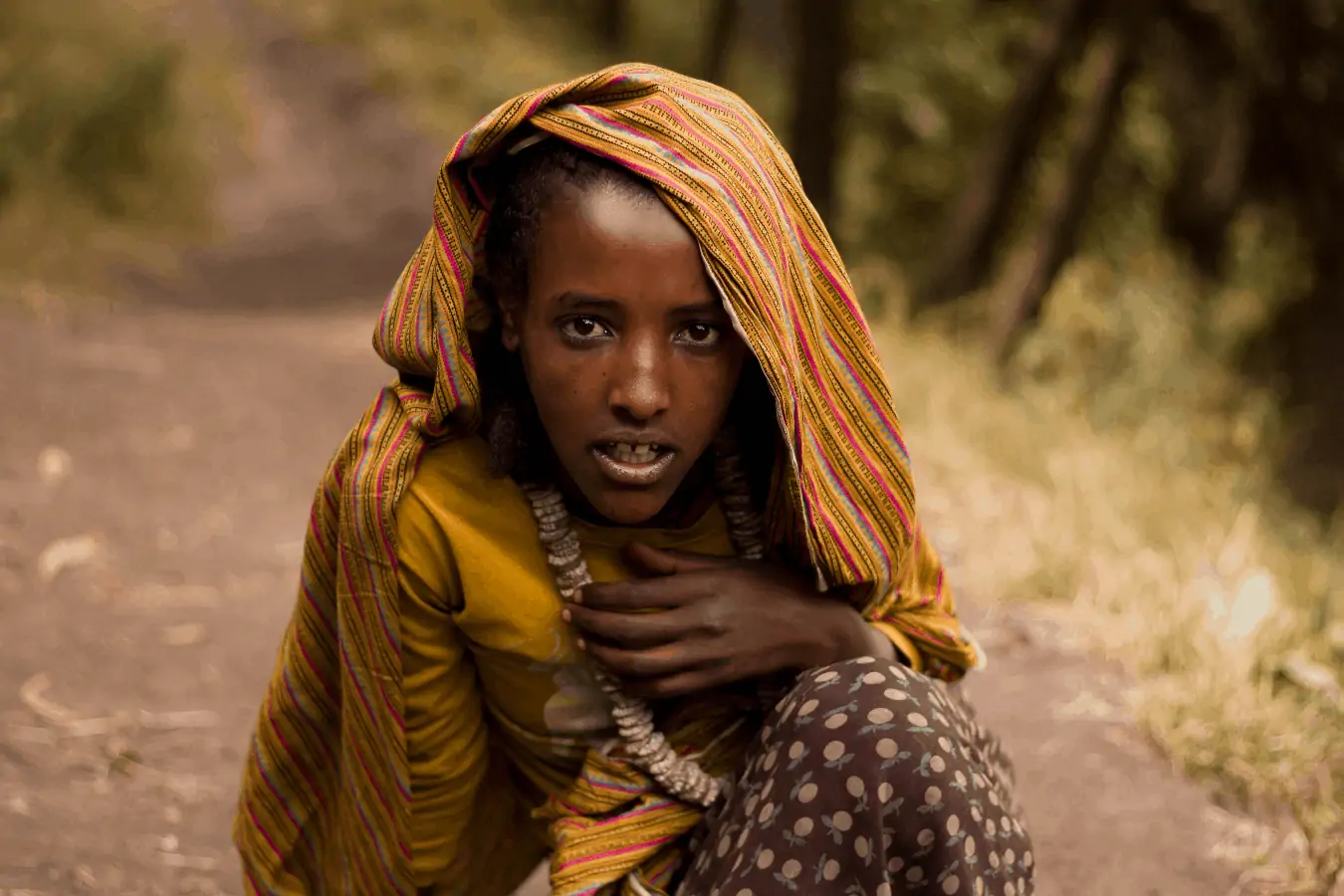Tsega Etefa, Colgate University
While the world is focusing on the humanitarian crisis in northern Ethiopia caused by the war between the federal government and the Tigray People’s Liberation Front, brutal repetitive attacks have taken place in the Metekkel zone of the Benishangul-Gumuz state in western Ethiopia.

Some of the reasons for the attacks include neighbouring Amhara state’s claim to ownership of the Metekkel zone. The Amhara state wants the right to administer Metekkel because it wants to control the zone’s mineral deposits and arable lands. Metekkel residents, including the majority Gumuz community, are opposed to Amhara occupation.
There are also competing interests from actors in Sudan and Egypt who are opposed to the filling of the Grand Ethiopian Renaissance Dam in Metekkel, and local elements who are unhappy with the formation of Ethiopia’s new ruling Prosperity Party.
Thousands have been killed and buried in mass graves, forced out of their homes, and properties looted and set ablaze.
More than 100,000 people have been displaced and 7,000 people have fled to Sudan. Many of those who are still in the region are not getting humanitarian aid.
The attacks by armed militia, mainly from the Gumuz people against the Oromo, Amhara, Shinasha, and Awi residents of Metekkel, escalated in September 2020 and continued into March of 2021. The Gumuz are one of the indigenous groups in Metekkel.
Some observers are now saying that the atrocities committed in Metekkel are reaching “holocaust proportions”.
The Amhara question
Metekkel zone is one of three zones in the Benishangul-Gumuz state. It borders the Amhara and Oromia states, and Sudan. Its main inhabitants are the Gumuz, Oromo, Awi, Amhara, and Shinasha communities.
Within the federal political arrangement, the Gumuz and the Shinasha control the six districts in the local administration structure. The other communities are not well represented in the local leadership framework.
Back in 2003 when I was doing fieldwork for my book on inter-ethnic relations in Metekkel, people from the different communities were unanimous in their desire to coexist peacefully. Eighteen years later, marginalisation, ethnic exclusion, poor governance and the absence of workable democratic mechanisms have significantly affected community relations.
Muferiat Kemal, Ethiopia’s minister of peace, now says that the “area has become a juncture for different interest groups.”
These interest groups include actors from the neighbouring Amhara state who claim ownership of the Metekkel zone. This claim gained momentum after Prime Minister Abiy Ahmed assumed power in April 2018.
The Amhara regional state and Amhara activists say that Metekkel was forcibly included under the Benishangul-Gumuz regional state after the Ethiopian People’s Revolutionary Democratic Front took power in 1991.
Their claim to the entire Metekkel zone has fuelled Gumuz militia attacks on non-Gumuz residents. The militias want to protect the Gumuz’s 30-year rule of the region.
The attacks have been aggravated by recent land grabs by Amhara and other non-indigenous investors who want to control the zone’s agricultural and mining sectors. Many Gumuz people have been displaced and they are not happy that the investors are hiring non-Gumuz workers to aid in their occupation of an area that is rich in resources like gold, marble and fertile agricultural land.
Regional interests
There are also Sudanese and Egyptian interests to consider. Both countries are opposed to the second filling of the Grand Ethiopian Renaissance Dam without negotiation. The dam is in Guba, one of the six districts in Metekkel.
Guba is the closest district to Sudan. Both Egypt and Sudan argue that the dam affects the flow of the Nile waters into their respective countries. Ethiopia started filling the dam, which is over 70% complete, in July 2020 and is getting ready for the second filling in July 2021.
Sudan’s recent claim to Metekkel and particularly to Guba district has shocked the region. The claim stems from the belief that Guba was gifted to Emperor Menelik II of Ethiopia (1889-1913) by Khalifa Abdullahi, a Sudanese Mahdist leader, in 1897. The boundary was confirmed in 1902 by Ethiopia and Sudan.
On the other hand, Egypt considers the dam a major threat to its food security. This is because the Blue Nile, which originates from Ethiopia, supplies up to 80% of the Nile waters.
Ethiopia has accused both Sudan and Egypt of sponsoring Gumuz militia attacks to jeopardise the construction and filling of the dam.
Local factors
Finally, Benishangul-Gumuz local government officials have owned up to orchestrating ethnic targeted killings in Metekkel as push back against Prime Minister Abiy Ahmed’s new Prosperity Party, which replaced Ethiopia’s former ruling coalition, the Ethiopian People’s Revolutionary Democratic Front.
The officials believe that the Prosperity Party, to which they now belong, wants to eliminate the existing federal arrangement which guarantees self-rule to ethnic groups in the country. The Gumuz enjoyed administrative rights over Metekkel zone. But if the ethnic federal framework is altered by the Prosperity Party, that would affect the interests of the majority Gumuz community profoundly.
They encouraged attacks on non-Gumuz inhabitants who they felt would gain the upper hand in the administration of the Metekkel zone if the current federal arrangement were to be altered.
In the end, the violence in western Ethiopia is a confluence of local, regional, national and, possibly, foreign interests.
Moving forward
Metekkel zone has been placed under a command post that is directly responsible to the prime minister. But attacks and tensions remain high. The violence might have ethnic undertones but this is a political conflict at heart.
The Amhara claim should be handled through constitutional means; not by force. And all the ethnic groups in the Metekkel zone should be protected and their issues addressed lawfully. The diplomatic dispute with Sudan and Egypt should be solved through dialogue and the dam negotiations should proceed amicably.
Tsega Etefa, Associate Professor of History, Colgate University
This article is republished from The Conversation under a Creative Commons license. Read the original article.
